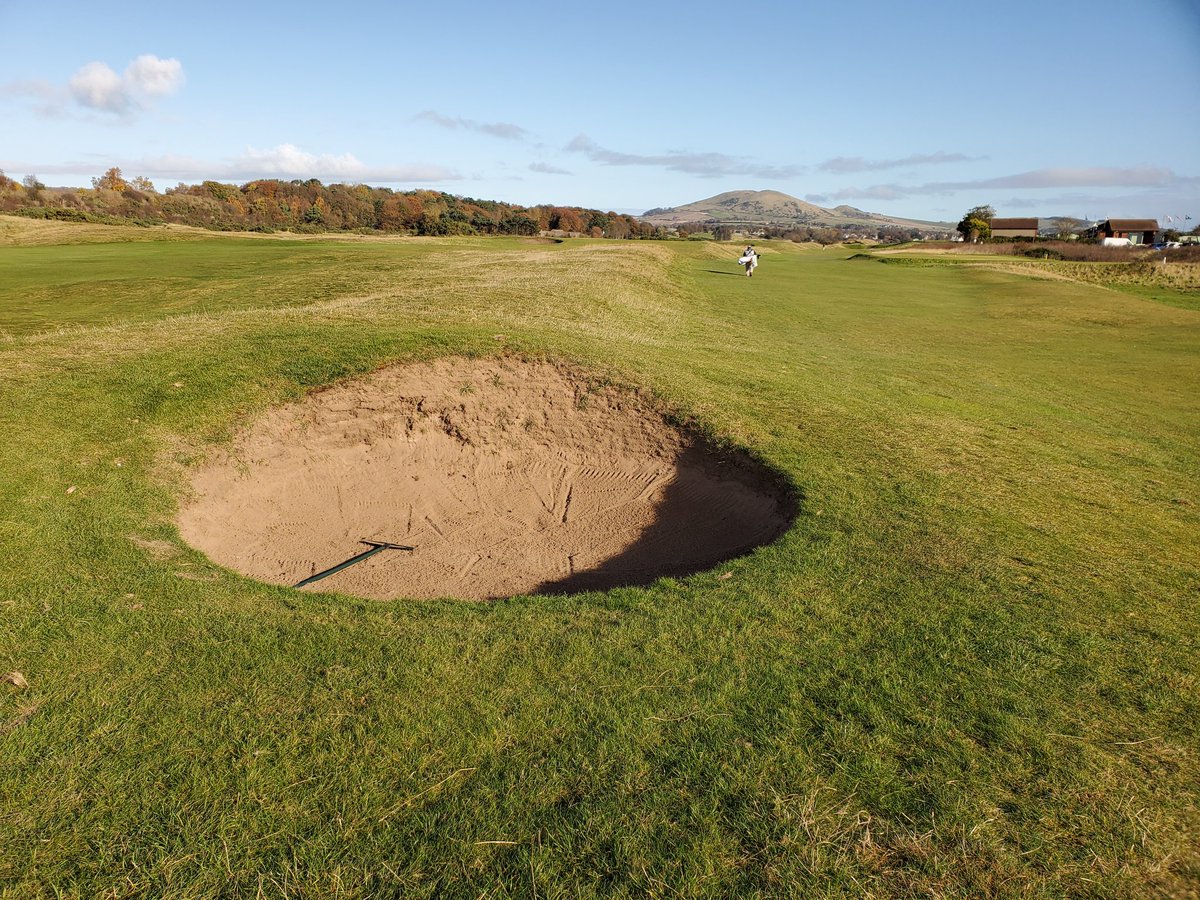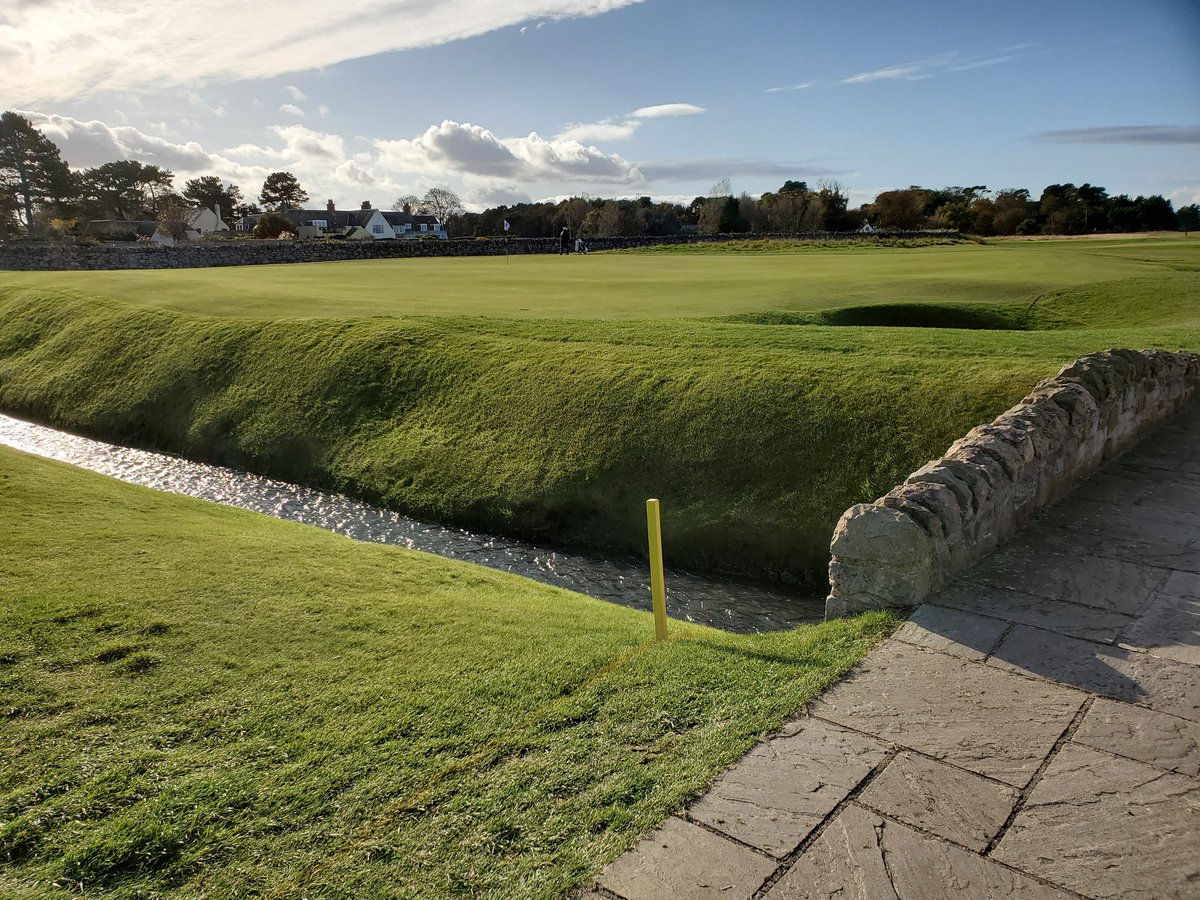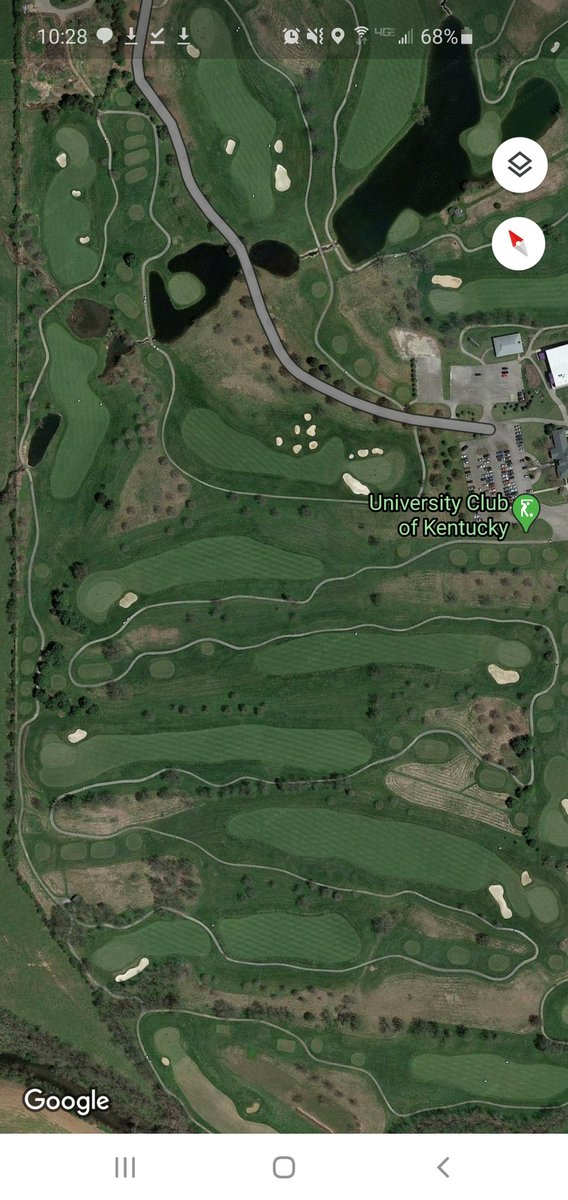A thread, on a thought that keeps confounding me:
Bunkers evolved naturally in Scotland, from windswept depressions in the sand, aided by animals seeking refuge from the weather.
Sure, they& #39;ve been refined & stylized there over time, but they& #39;re still lineal descendants. 1/7
Bunkers evolved naturally in Scotland, from windswept depressions in the sand, aided by animals seeking refuge from the weather.
Sure, they& #39;ve been refined & stylized there over time, but they& #39;re still lineal descendants. 1/7
There may be pockets in the US that such naturally occurring sand creates exposed sand faces and burrows, but they have to be pretty rare.
Might not golf in non-sandy locations be better served by a different type of hazard? 2/7
Might not golf in non-sandy locations be better served by a different type of hazard? 2/7
Here in central Kentucky, we have a diversity loamy soils, with plenty of clay mixed in. We& #39;re right on top of giant limestone columns in our plateau. Naturally occurring sand bunkers simply don& #39;t exist.
Yet all of our golf courses have bunkers forces into the design. 3/7
Yet all of our golf courses have bunkers forces into the design. 3/7
Bunkers that cost a relative fortune to maintain; I shudder to think what the man-hour value of maintaining a bunker might be on a per square foot basis.
I realize technology is helping make better quality, better draining bunkers, but that still doesn& #39;t make them native. 4/7
I realize technology is helping make better quality, better draining bunkers, but that still doesn& #39;t make them native. 4/7
Instead of sand, you know what we have? Gulleys. Ditches. Out west they call them ravines or barrancas.
And patchy field fescue grasses. And rock like you wouldn& #39;t believe.
I feel like some enterprising architect or superintendent could develop more native hazards. 5/7
And patchy field fescue grasses. And rock like you wouldn& #39;t believe.
I feel like some enterprising architect or superintendent could develop more native hazards. 5/7
On his @feedtheball interview, Drew Rogers @JDRgolfdesign mentioned his idea of a bunkerless course, just wall to wall turf. That would fit so much better in so many parts of the country (or world).
Middle & lower tier courses often struggle to maintain their sand quality. 6/7
Middle & lower tier courses often struggle to maintain their sand quality. 6/7
Keep bunkers on the coasts and the sand hills/dunes, and on courses that are renowned works of art and significance.
But surely there could be a better design option, something that fits the landscape better, than sand bunkers where they don& #39;t occur.
Sigh.
FIN. 7/7
But surely there could be a better design option, something that fits the landscape better, than sand bunkers where they don& #39;t occur.
Sigh.
FIN. 7/7

 Read on Twitter
Read on Twitter







